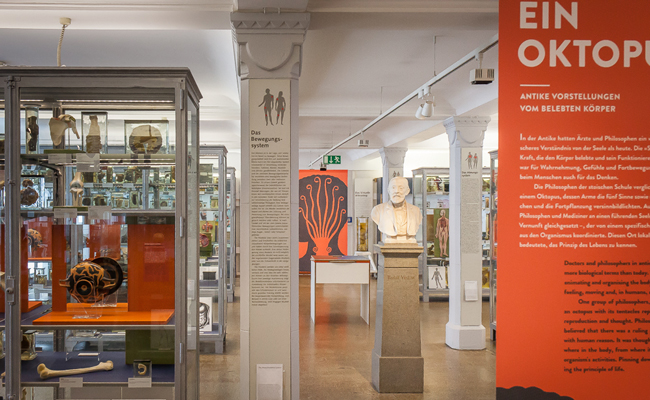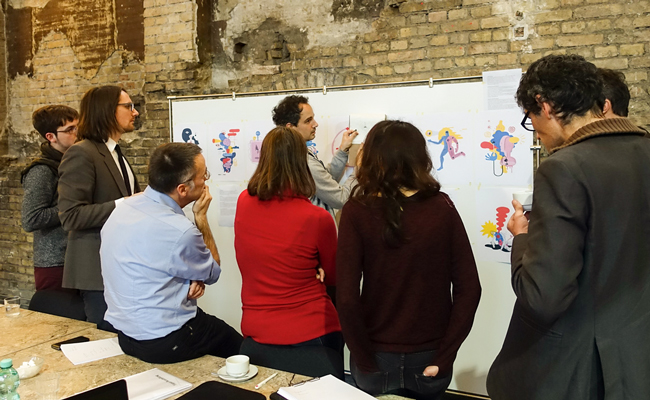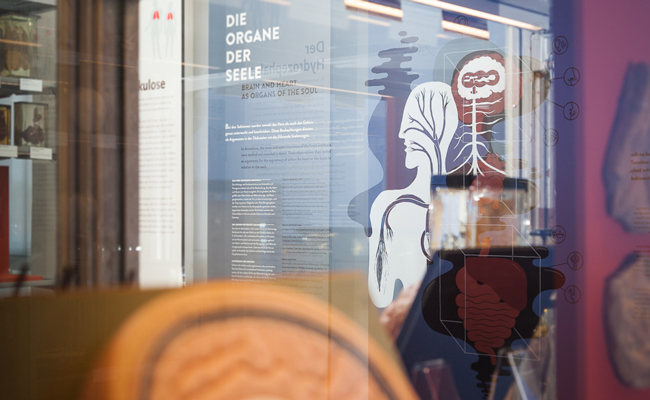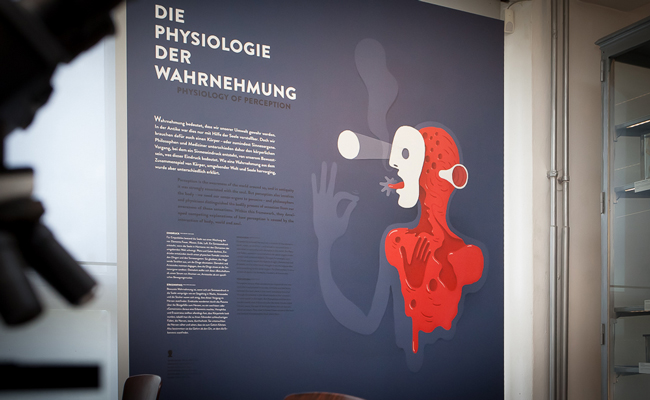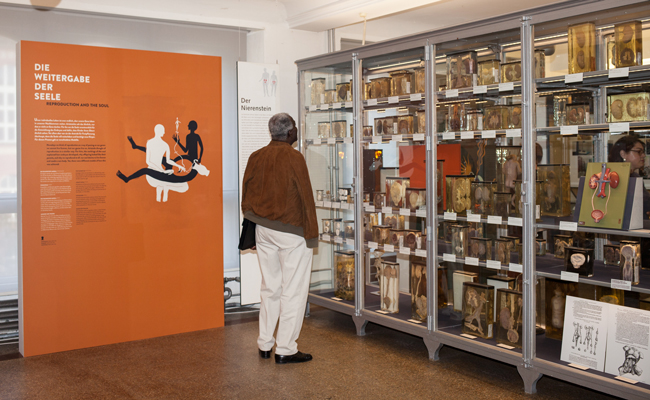The purpose of this project was to present some of the results of the research carried out in research group (D-2) Mapping Body and Soul (and in the Alexander von Humboldt-research group “Medicine of the Mind, Philosophy of the Body”) to a larger, non-specialist audience.
Research
In co-operation with the Medical History Museum at the Charité, and under the guidance of a professional curator (who was recruited for the project), members of research group (D-2) and of the Alexander von Humboldt-group prepared and organised an exhibition about ancient medical and philosophical ideas on the soul-body relationship. The title of the exhibition (using a metaphor derived from Stoicism) was “The Soul is an Octopus. Ancient Ideas of Life and the Body“ (“Die Seele ist ein Oktopus. Antike Vorstellungen vom belebten Körper“). The exhibition was situated in Rudolf Virchow’s Präparatesaal in the Medical History Museum, where ancient artefacts, quotations from ancient medical texts and modern graphic representations of ancient ideas (created by a visual translator) were combined with items of the permanent collection, thus encouraging a dialogue between ancient and modern medicine and ‚mappings’ of soul functions in specific bodily regions. More broadly, the exhibition was meant to raise public awareness of the Graeco-Roman background of today’s ideas on health and disease and body and soul, and to promote reflection on contemporary issues such as psychosomatic interaction, holism vs. fragmentation in medicine, lifestyle and responsibility in the preservation of health and in the prevention and treatment of disease.
To accompany the exhibition, we produced a catalogue with images and essays:
In addition, a German translation of the main parts of this publication (by Thomas Schnalke) was provided for Museum visitors.
The exhibition was accompanied by the lecture series “Die Seele ist ein Oktopus: Antike Vorstellungen über den belebten Körper”, in which Heinrich von Staden (Princeton), Shigehisa Kuriyama (Harvard), Antje Krug (FU), Henrik Walter (Charité) and members of the project (Chiara Thumiger, Orly Lewis, and Philip van der Eijk) presented topics from ancient medicine related to the exhibition for a general audience.
The exhibition, which was on view from 10 May 2016 till 11 September 2016, attracted c. 25,000 visitors. It received very favourable coverage in the Berlin press and in medical journals such as the Deutsches Ärzteblatt. A further sign of the success of the exhibition is that the Medical History Museum in Ingolstadt (2017) and the clinical center Göppingen (2018) have requested to host it. We have also received expressions of interest from museums in the UK and in the Netherlands. But above all, the experience of working together on this exhibition was extremely instructive and productive: for most members of the research group, this was their first experience in popularisation academic research. They learned that public engagement is not only challenging in terms of presentation, but also adds to one’s understanding of the subject.
Apart from Topoi, funding for the exhibition was provided by Philip van der Eijk’s Alexander von Humboldt grant and by the Schering Foundation.

